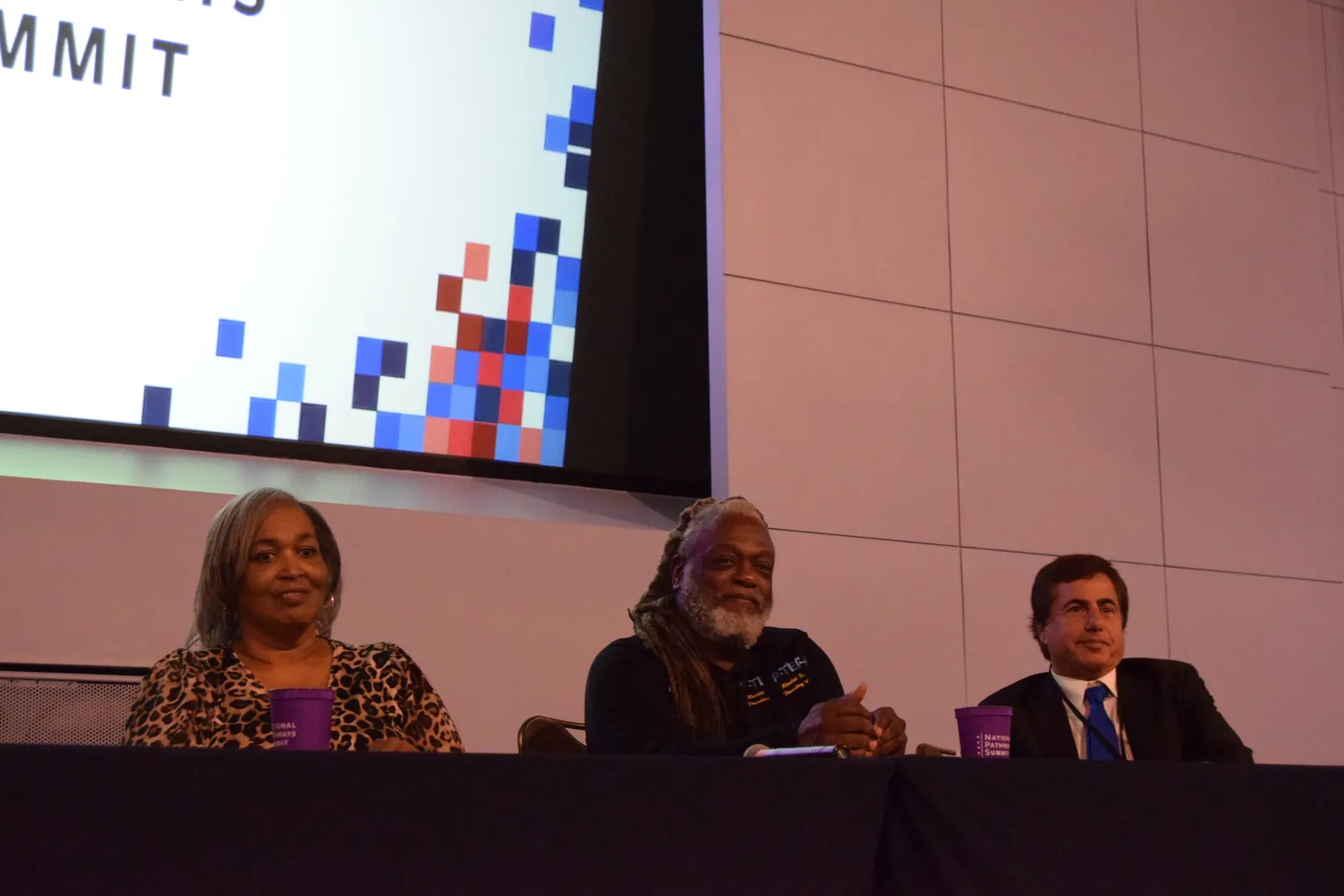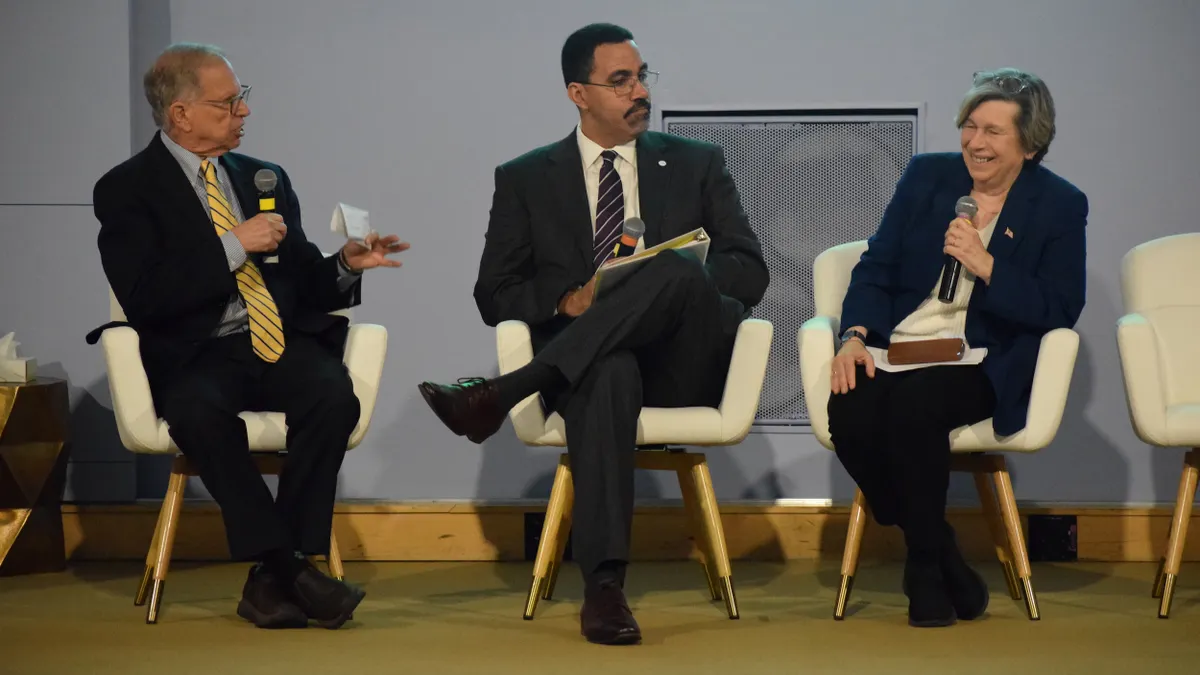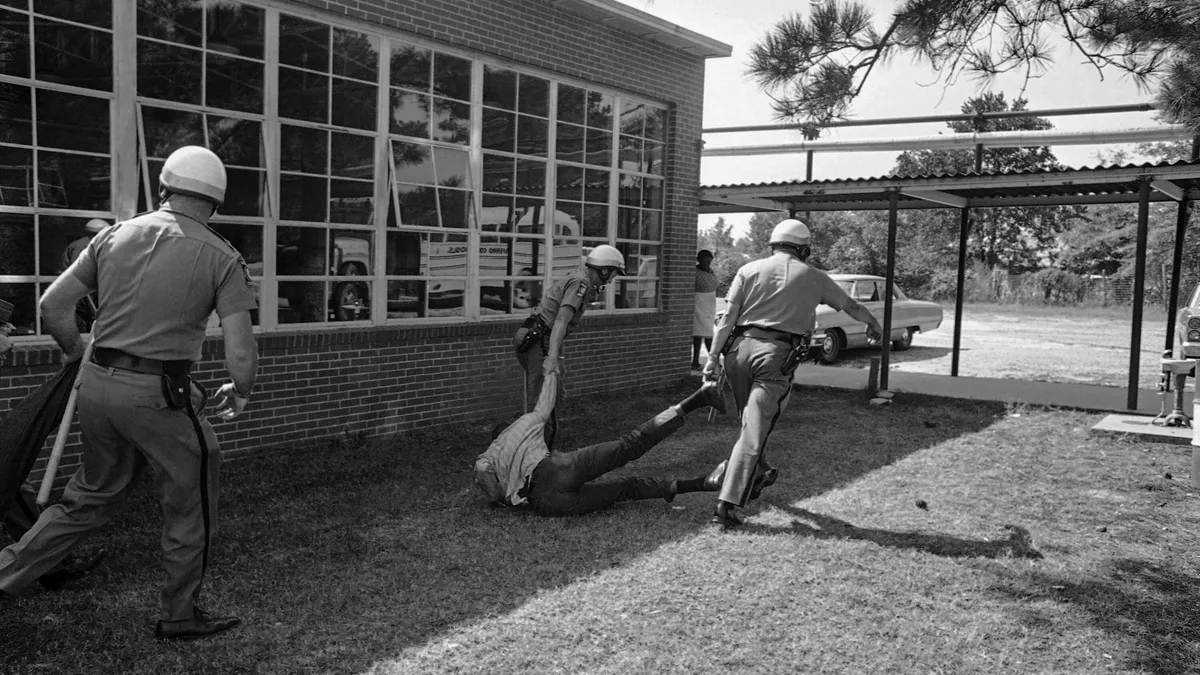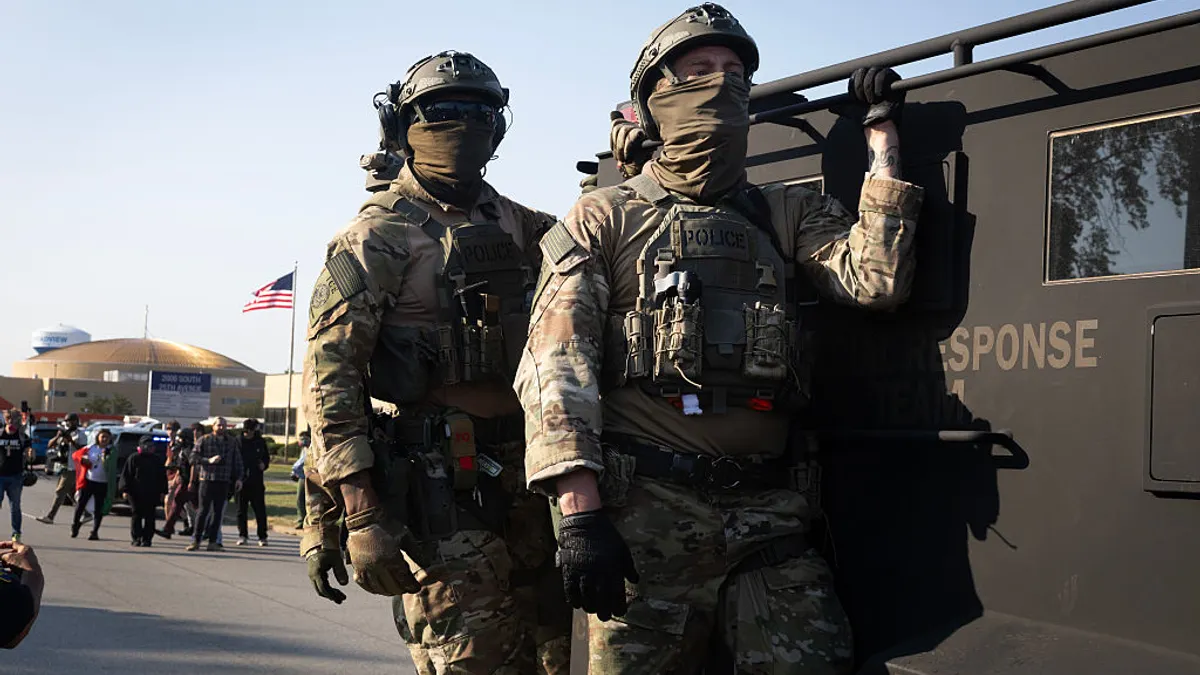WASHINGTON — The momentum for providing all students access to meaningful career and college pathways is growing, but hurdles such as funding, teacher training, reluctance to change and other factors stand in the way, said speakers at the National Pathways Summit on Thursday.
Experiential learning about careers is what students, families and educators want. Industry leaders also want to employ workers with job skills and essential abilities like problem solving, collaboration and resilience, the speakers told the 300 summit attendees.
And these skills and abilities are not just desirable, but critical to the health of the economy, said Stanley Litow, chair of the National Pathways Initiative, a bipartisan federation of students and leaders from education, business, government, politics and advocacy organizations that promote promising K-12 and higher education career and college preparation programs.
"From the business community standpoint, there is an enormous amount of pressure in the labor market around the skills area," said Litow, a former deputy schools chancellor for New York City Public Schools and former president of the IBM Foundation. He is currently a professor at Columbia University's School of International and Public Affairs.
Litow said that by 2030, over 70% of the new jobs created will require some form of postsecondary education, which includes credentials, apprenticeships, two-year and four-year degrees, and other continuing learning programs.
But to make career and college preparation successful for students and industries, the education and business communities need to partner to align their needs, Litow said. "We have to break down the barriers, we have to collaborate, we have to work together."
Successes and challenges
Randi Weingarten, president of the American Federation of Teachers, and John B. King, Jr., chancellor of the State University of New York and a former U.S. education secretary, both noted that there's a high level of agreement across the country that workforce preparation in K-12 and higher education is important.
They also pointed to several successful programs that are helping students gain the skills necessary for their chosen occupation. King, for example, highlighted the Real Life Rosies program at Mohawk Valley Community College in Utica, New York — a 12-week pre-apprenticeship program that helps women gain advanced manufacturing skills.
But Weingarten and King also noted obstacles that are stunting students' access to skill-based learning.
For one, K-12 school systems "are really terrible at change," Weingarten said, adding that they "only change when an accountability system changes. And so the problem is we have a really outdated accountability system."
Weingarten also said that school systems tend to be risk-averse. "People get blamed" if an initiative isn't 100% successful, she said. That's why school accountability systems need to be revised, "to give people permission to do something different."
King said one obstacle is that there's a culture challenge. Some people think that a liberal arts education and career readiness preparation programs are in conflict with each other, he said. "Sometimes people react against talk of careers, because it seems that it is making education just about the job," he said.
King also said leaders from all industry sectors need to voice support for education and prioritize learning as an investment, as well as work on solutions to barriers. "We need the business community nudging people on both sides of the aisle to stand up for education and stand up for this vision we've been talking about today," he said.

Two diplomas by high school graduation
Several speakers during another panel discussion highlighted one approach that is helping high school students graduate with both high school and associate degree diplomas while also gaining career skills and connections to potential employers through mentorships, paid internships, and other on-the-job experiences.
The P-TECH 9-14 school model was created by IBM to encourage public-private partnerships to give high school students specific workplace skills while they earn both diplomas. The first P-TECH school was launched in New York City in 2011.
Reo Pruiett, chief programs and engagement officer at Communities Foundation of Texas, focuses on improving K-12 and higher education outcomes. She calls the P-TECH approach "game changing."
She said the program has helped students gain upward economic mobility and has "demystified" the college experience for students while they are still being supported as high schoolers.
"I think that's one thing about P-TECH; It allows us to make sure our students are prepared to dream and not to just settle," she said.
Don Haddad, superintendent of St. Vrain Valley School District in Colorado, credits the program for increases in the district's graduation rates and reductions in the dropout rates, which now stands at 0.4%. He also cited an increase in the number of students participating in extracurricular activities. Students in the district have the opportunity to study career pathways for computer information systems, cybersecurity, medical and bio sciences, education and more.
"If you create the opportunities, every child is smart enough to systematically move through that system," said Haddad, who is in his 17th year as the district superintendent.
But Pruiett, Haddad and Rashid Ferrod Davis, the founding principal of the Pathways in Technology Early College High School in New York City, said there are some pain points.
Pruiett said some Texas rural school districts don't have access to a variety of business partners that some urban areas do, which can limit P-TECH students' opportunities for on-the-job skill development. In those instances, some rural districts partner with each other to share industry partnerships and other resources.
Another workaround for the lack of business partners is to coordinate with other industries that may offer similar skill-building opportunities. For example, if there are no nearby hospitals, nursing homes may be able to offer related experiences to students interested in the medical sciences.
Likewise, hospitals may be ideal settings for on-the-job experiences for a variety of careers, such as medical sciences, hospitality and accounting. School districts are also potential partners for hosting interns, Pruiett said.
But the state, Pruiett said, is always looking for more partners to meet the demand for real-world job experiences for students. "So if you know someone in Texas, let us know."





















